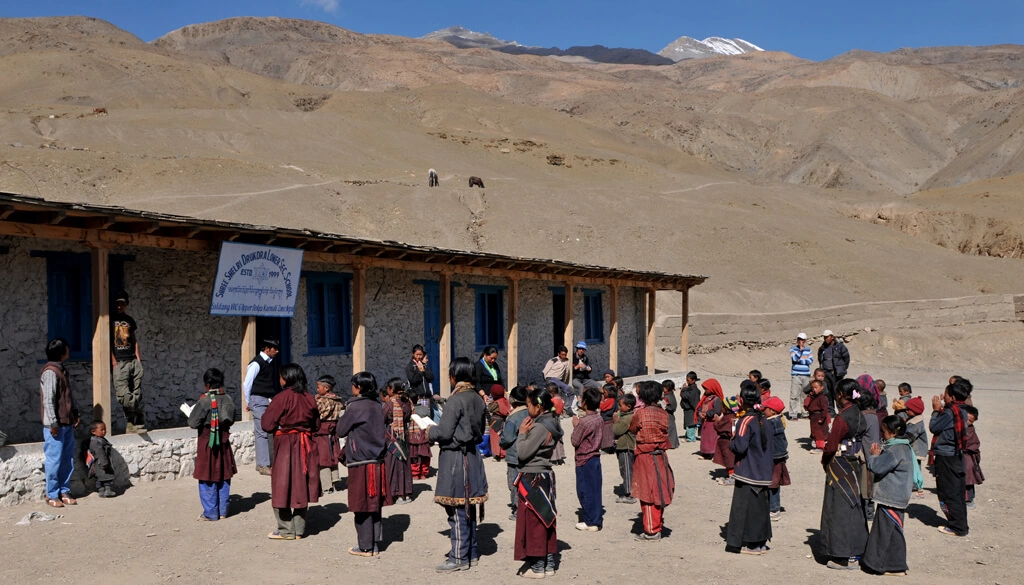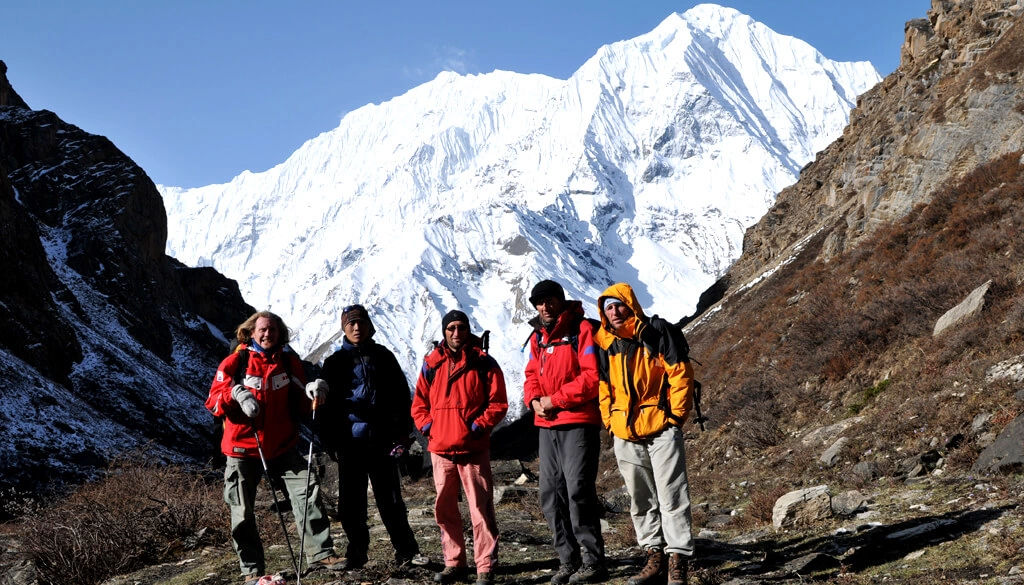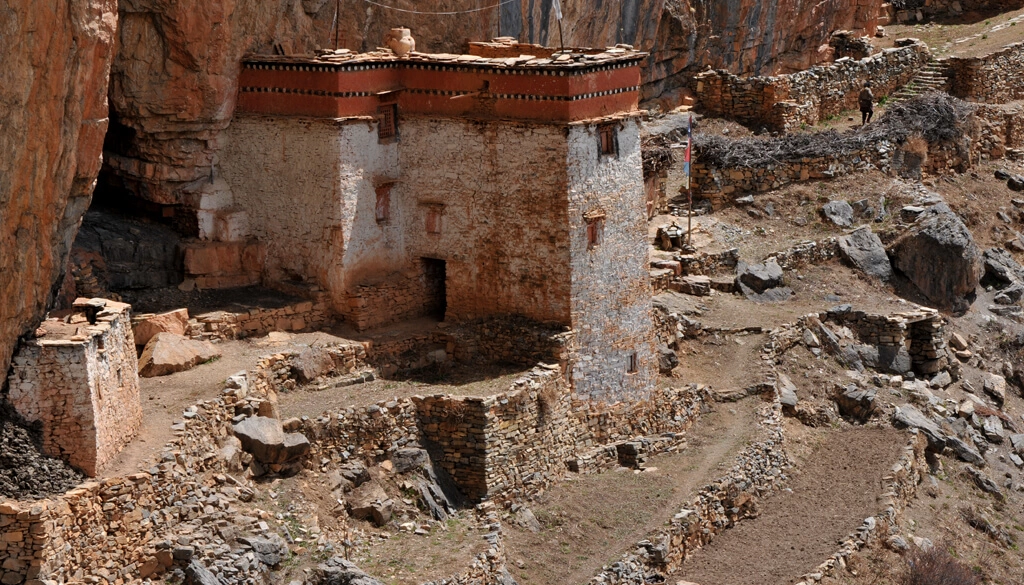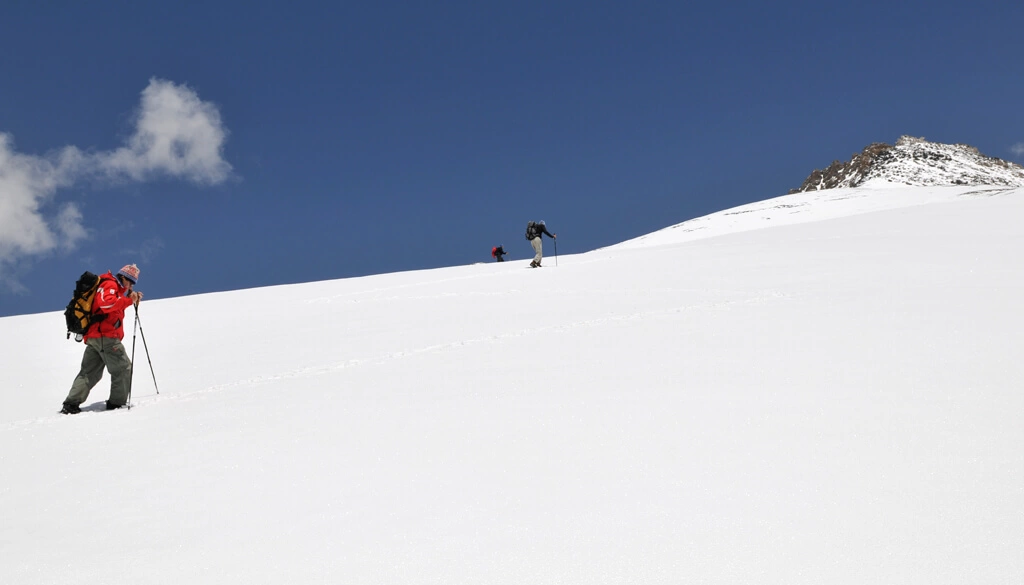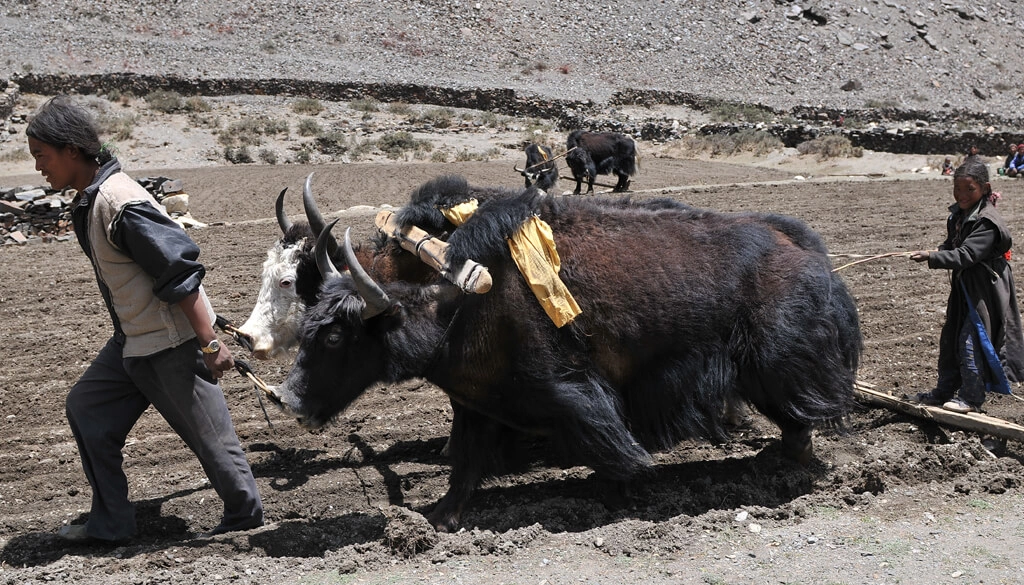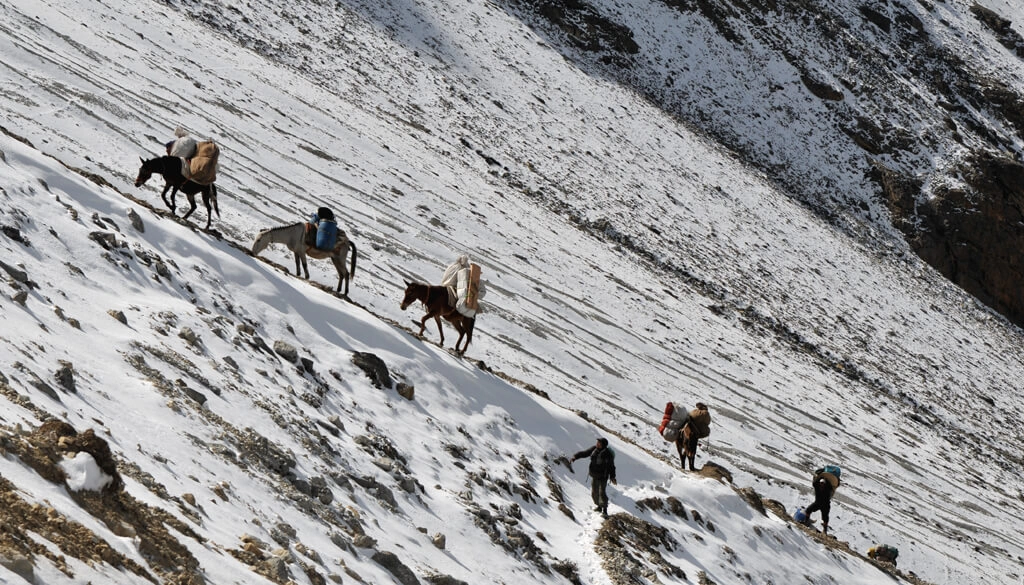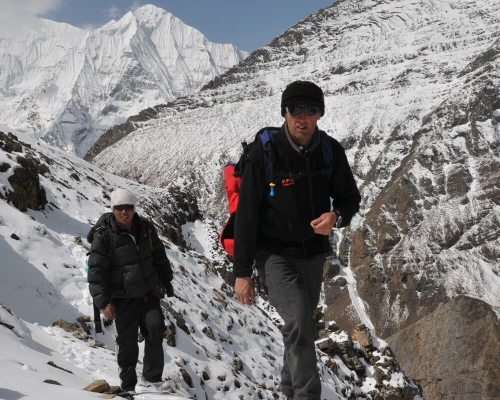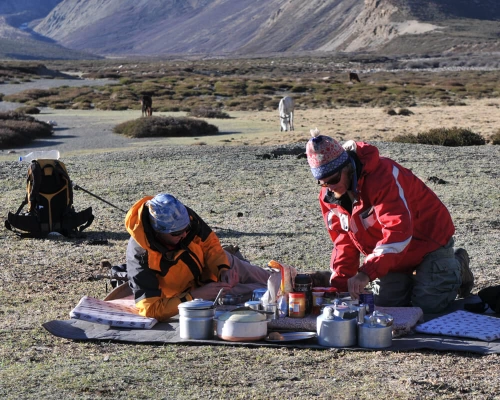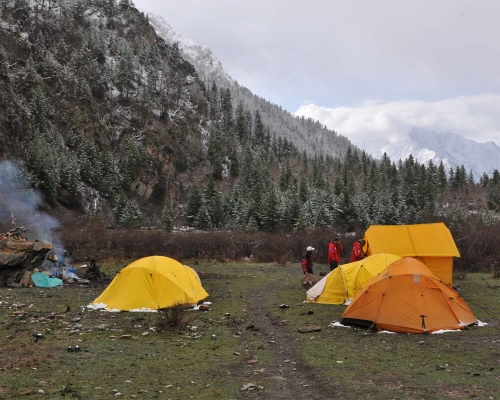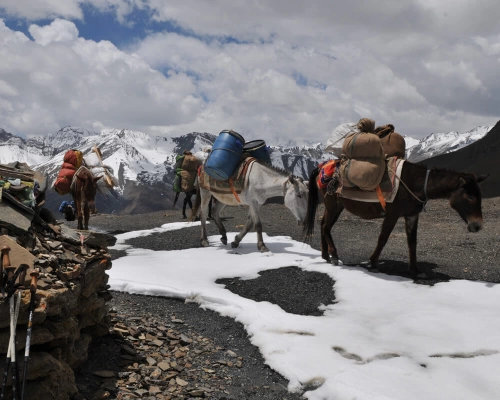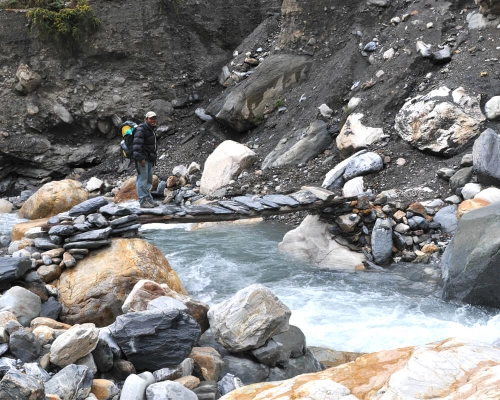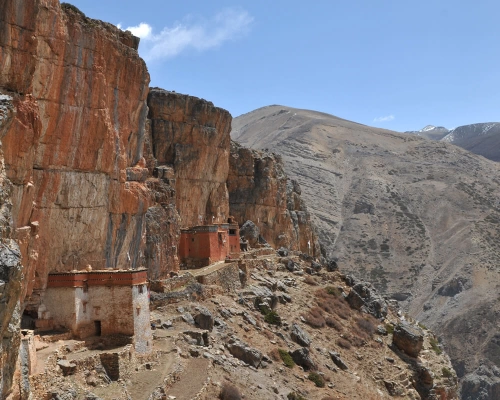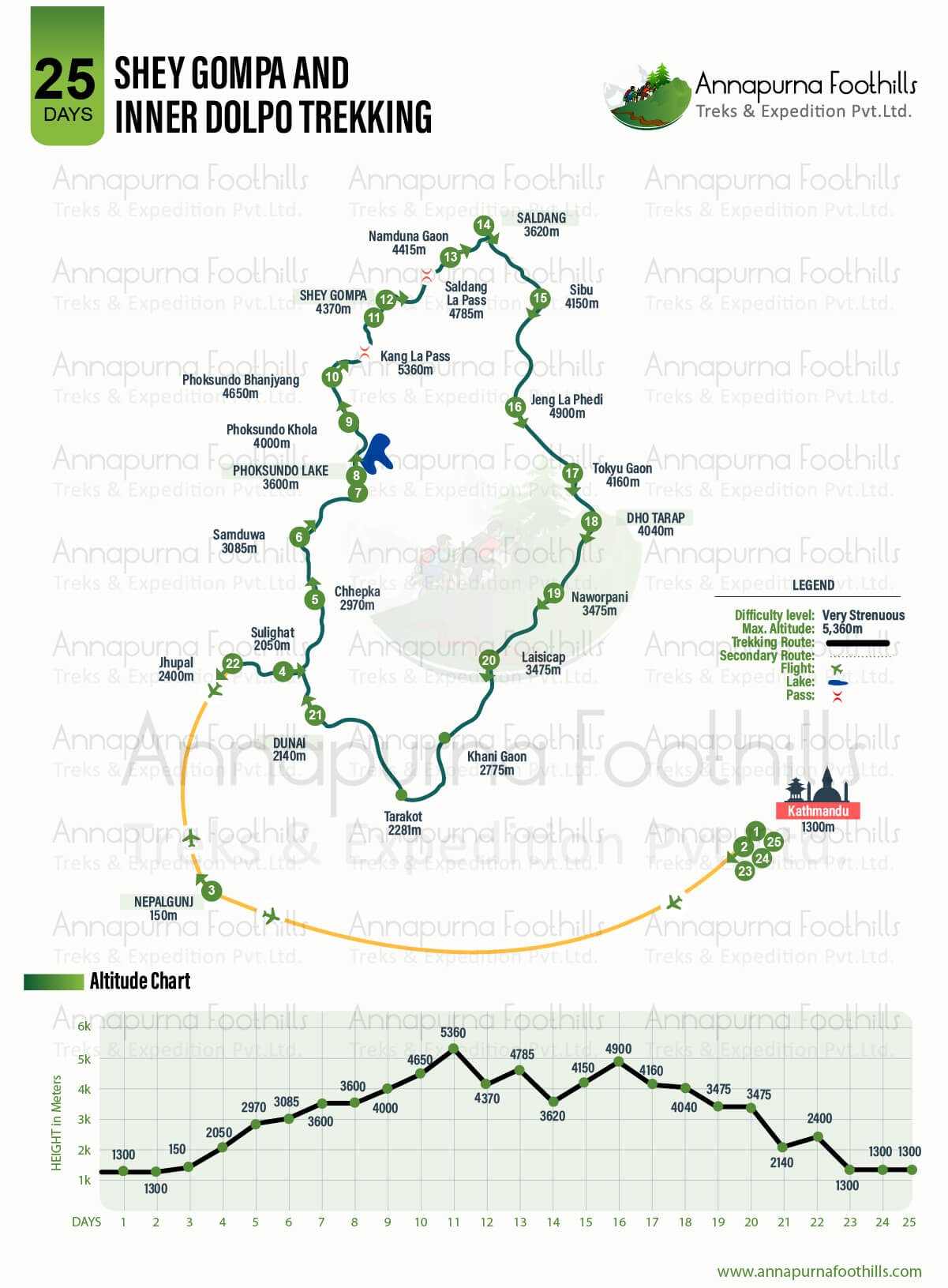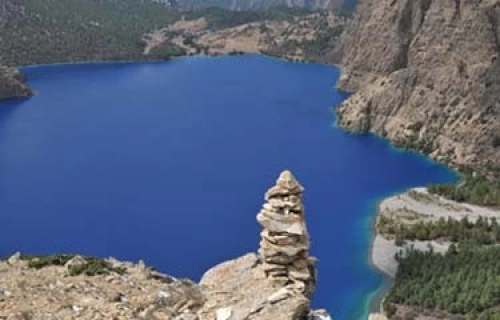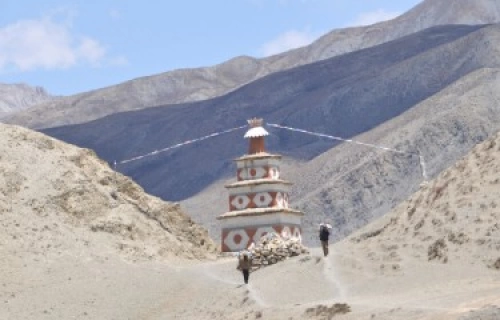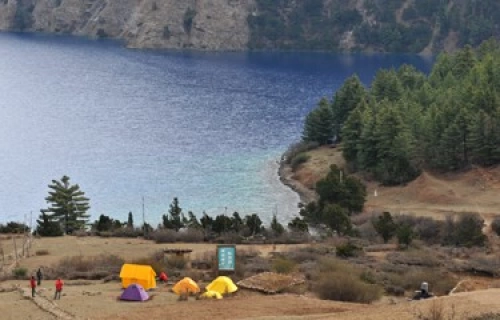About Shey Gompa and Inner Dolpo Trekking
Shey Gompa and inner Dolpo Trekking takes you beyond Phoksundo Lake to the mystical land of the 800-year-old Shey Gompa and Crystal Mountain. The landscapes include the green, southern fringes of Dolpa, the turquoise Phoksundo lake, and the parched hills of Upper Dolpo. This is quite a strenuous hike with some long, steep ascents and descents and considerable time spent above 4000 meters with very cold nights. But the unforgettable landscapes, the views from the passes and the contacts with a very special untouched culture make it all worth it. The resilient villagers you meet in this harsh land seem wholesome and almost supernatural.
Shey Gompa and inner Dolpo Trekking begins at Jhupal village; a short flight from Nepalgunj that will take you centuries back in time. The trail from Jhupal follows the Phoksundo river valley and leads through natural forests, grassy fields and remote villages until we reach Phoksundo Lake and enter the boundary of Upper Dolpo region, enclosed in a large national park. We spend a day there to rest and feast our eyes on the crystal blue waters of Phoksundo Lake, from which flows one of the highest waterfalls in Nepal. Re-energized, we leave Phoksundo Lake to make the steep two-day ascent to the Himalayan pass of Kang-La, 5360m.
From Kang-La Pass, we make a steep descent into the Nam Khong Khola river valley to the Shey Gomba Monastery the spiritual heart of Upper Dolpo. The people of Dolpo followed Bon Po, a fierce mountain and nature spirit before a Tibetan Buddhism was introduced to them. As a result, the worship at Shey Gomba combines elements of both Bon Po and Buddhism.
Shey Gomba sits at the base of the magical place called Crystal Mountain. Each year people from all over Dolpo reach this secluded place to celebrate the festival at Shey and complete the circuit of Crystal Mountain. Shey means Crystal, and Shey Gomba got its name for the rugged cliffs of Crystal Mountain which are embedded with quartz and a rich variety of marine fossils. As we trek deeper into the Upper Dolpo, we follow ancient paths created by the Tibetan salt traders who traverse this arid zone of the Trans-Himalayan Tibetan plateau. The terrain is wild, barren, and windswept as we continue eastward into the beautiful valley of Tarap Chu. Soon we come to Dho Tarap, 4040m, an unusual village built in a haphazard way and surrounded by a jagged stone wall. We take a day to explore and visit Bon Gomba, a 40 minute walk from the village.
Leaving Dho Tarap, the trail is lined with juniper bush and wild rose, typical of areas near the tree line. We might see herds of blue sheep and musk deer. As we descend, the valley opens and vegetation increases until verdant grass is seen beside the river. We will camp on a lush meadow known as Kamakharka, 3800m, where the Tarap Chu and the Lang Khola meet. Continuing along the gorge of the Tarap River will be another memorable part of the Shey Gompa and inner Dolpo Trek. The deep gorge becomes so narrow that in some places we can jump from one side to another. If the bridges are damaged or washed away, we may have to cross the raging torrent on foot. After passing through an impressive forest, we descend into another gorge and follow the river downstream to Tarakot, 2537m, an old fortress town where fertile terraced fields greet us.
Finally, we walk alongside a tremendous gorge of the Bheri River to Jhuphal.
Shey Gompa and inner Dolpo Trek remains one of the least-visited pristine destination in the Himalaya of Nepal.
You Also May Be Interested in The Upper Dolpo Trek is a challenging but rewarding trek. The scenery is stunning, the people are friendly, and the culture is unique. The Trip Starting Juphal Airport and Trekking ends at Jomsom. READ MORE............NOTE: Shey Gompa and Inner Dolpo Trekking can be customized according to your requirements and depending upon the length of your stay. An additional cost of USD 150 Dollars per person per day will be added if you want to exted your trekking days and similarly, USD 150 Dollars per person per day will be deducted if you wish to shorten your trekking days.
Shey Gompa and inner Dolpo Trek with safety and comfort
You can rest assured that your safety and comfort are our priorities. As a safety precaution, we always carry emergency equipment:
• Supplementary Oxygen Cylinder with mask regulator or Gamow Bag (A life saving device in case of AMS (Acute Mountain Sickness)
• Comprehensive medical/first aid kit
• Thuraya satellite phone for logistical, safety and personal use. Personal calls can be placed for $3 USD per minute.
Why Trek to Sher Gompa and Inner Dolpo with Annapurna Foothills Treks?
When trekking into extremely remote regions, it is important to have trek with an experienced company. Annapurna Foothills Treks has been running trekking and climbing expeditions in Dolpo for over 10 years. Annapurna Foothills Treks reaches for the highest standard of ethical business practices.
The Best Time of Year for the Sher Gompa and Inner Dolpo Trekking:
The best seasons for trekking in Upper Dolpo are spring (February to late April) and autumn (late September to late November). A summer trek is also possible however, the flight from Nepalgunj to Juphal may be affected by monsoon weather.
Temperatures on the Sher Gompa and Inner Dolpo Trekking:
The temperatures at night will drop to around 5C, and during the day will climb to around 25C. At higher altitudes temperatures range from about 15C to 20C. You should be prepared with proper protection from the sun as well as layers of clothing that can be added or taken off easily.
Camping Trek:
Accommodation is included in the cost of your package and Annapurna Foothills Treks takes great care to arrange the most comfortable accommodation possible throughout your stay.
Tented camping in Upper Dolpo is sure to be a great outdoors holiday. Our cook will assure you will enjoy delicious and hygienic food during the trek to keep you healthy and strong. Most of the food is flown in from Kathmandu. Three generous meals a day, tea/coffee, hot Tang and high energy snacks are included in the package.
- Foothills Treks logistics are well organized and of excellent quality. Besides your two person sleeping tents*, we provide dining tent, kitchen tent, tables, chairs and even toilet AND shower tents!
Sherpa Support Staff:
- Foothills Treks has a capable support staff with ample experience in organizing camping trips. The relationship we have developed among us over the years makes for a wonderful exchange of ideas, laughter and assistance. Your personal packs will be carried by the porters, saving you time and energy to fully enjoy the surrounding environment.
Drinking Water on the Sher Gompa and Inner Dolpo Trekking:
You will be provided with boiled water during the trek. While trekking, it is important to keep hydrated; you should drink at least 3 liters of water each day. As additional precaution, we suggest you bring a supply of water purification tablets to add to the water.
Fitness/Health:
The altitude becomes more noticeable the higher we go, so we walk at a slow pace and take plenty of breaks to rest and acclimatize.
Safety:
When travelling in remote mountain regions, uncertainties such as weather, health problems and natural disasters require a certain amount of flexibility. While our goal is to follow the itinerary, that is not our first priority; your safety is always our first priority. Annapurna Foothills Treks and Expeditions request your cooperation to accept the decisions and advice of our trusted and experienced guides if they deem it necessary to change or cancel any part of the itinerary due to safety concerns.
- We either take Gamow OR oxygen in case of
- Satellite phone (personal calls charged USD $3/minute)
- First Aid Kit
Environmental Responsibility:
Annapurna Foothills Treks practices and teaches the Leave-No-Trace principles. Moreover, we are committed to protecting the land and culture of the indigenous people. The mountains are our home and we are unwilling to sacrifice their preservation for human objectives. Annapurna Foothills Treks believe that given the proper information most people will do all they can to help protect and maintain the environment.
Acclimatization:
It is really difficult to head straight up to high altitude for the first time even if you follow the recommended 400m-a-day-rule. Our itinerary is planned to allow rational acclimatization and avoid altitude sickness. Please read Altitude Advice.
Travel Insurance:
It is strongly recommended to be sufficiently protected when you go into remote areas. You need specialized travel insurance that covers emergency evacuation, injury, lost baggage, liability and medical treatment. Make sure the insurance covers all the activities that you will be undertaking during your stay in Nepal. Annapurna Foothills Treks and Expeditions Pvt. Ltd. can organize the appropriate medical response based on your policy.
